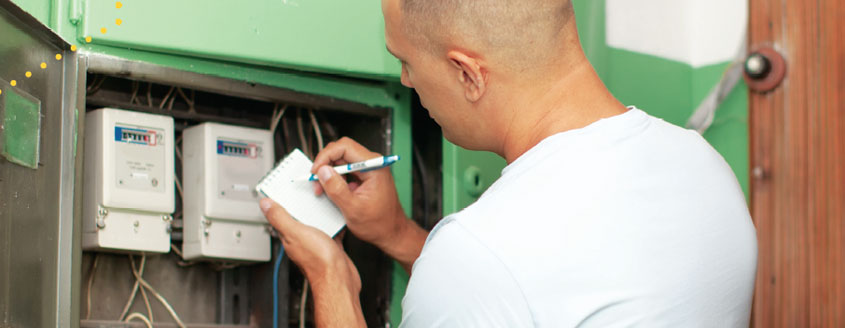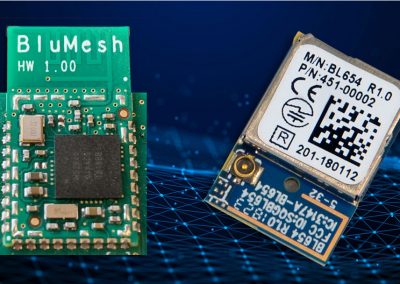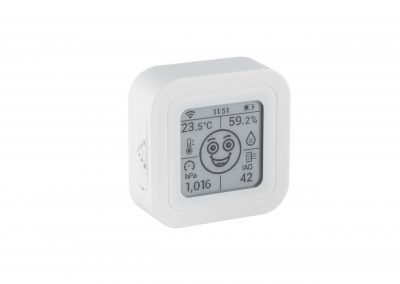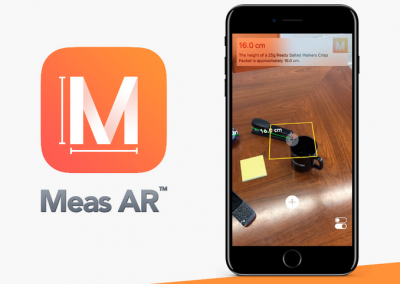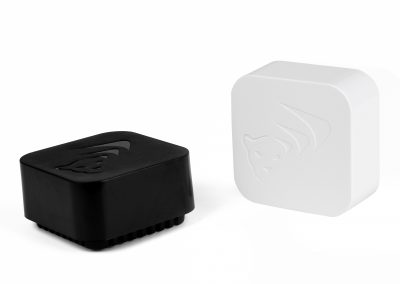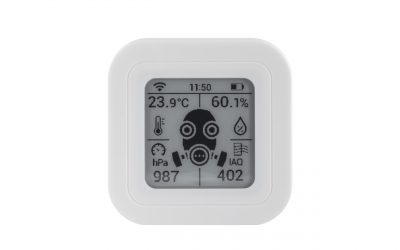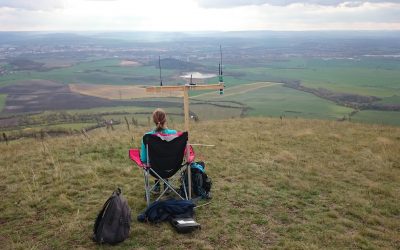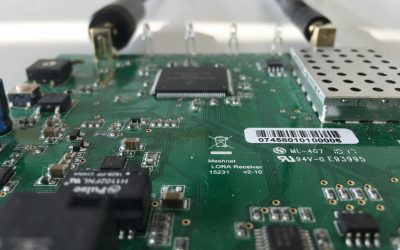As the name implies, the term Automatic Meter Reading (AMR) is commonly used when your utility meters are read without any user intervention. Traditionally, meter reading required (and still common) personnel to walk to the meters and record the readings off the dials or displays. This data is fed back into the utilities database to generate the consumption data from which customer bills are generated. For most utilities, the data needs to be collected from Gas, Water and Electric meters. AMR eliminates the need to manually read the meter readings and reduces the effort required to record the readings.
Advanced Metering Infrastructure (AMI) is a term commonly used to represent meter systems that go beyond AMR into remote utility management. This may include facilities such as remote shutoff, two way communications to the meter and more detailed data collection including parameters such as tamper, direction, maximum usage, average usage, etc.
The main components of an AMR system include a Meter with a communications interface, a Data Collector and a Database.
The Database
There are many systems varying between utilities and data collection companies. It is effectively a database that holds all the customer and meter data. The data can be used for billing, demand forecasting, usage trends, leak detection and tariff cost management.
Data Collection
The types of communications interface on the meter and the data collector can vary depending on the type of methodology employed for the reading. Most common methodologies include, Walk-by, Drive-by, Fixed Network and Hybrid AMR systems.
Another important component in the design of the system is the wireless technology. Again, traditionally, only a one-way system could be utilised but recently, about 5 years ago, two-way systems have become the norm due to availability of RF chipsets at acceptable costs.
This paper focuses on the use of two-way wireless methodology for collecting meter data.
Wireless technology for this application normally utilises an ISM (Industrial, Scientific and Medical) band available in the country of deployment. This allows the frequency band to be utilised for the application and regulated by way of duty-cycle and radiated power. Most common frequencies in UK and Europe are 433Mhz and 868Mhz. In the US, it could be 914MHz whereas in other countries it could be another. The frequency band of 2.4Ghz can be used in most countries around the world. Selection of frequency, approvals and performance at the different band will be a discussion for another paper.
Walk-By / Drive-By System
This is where the personnel walk or drive past the meter with a meter reading device. The reader is RF enabled and either listening to the data being transmitted for the meters or waking them to respond to the reading request.
The main difference between the walk-by and drive-by system is the frequency at which the data is being transmitted from the meter or the speed at which the interface can respond to the reading request. The figure is calculated based on the wireless communications range of the products and the time the reader could potentially be in the reading range. In our experience, this figure can be between 2 seconds and 10 seconds.
As trivial as it may sound, this is the most important factor in any system design due to the battery life requirement on the meter interfaces. With large volume deployments, a minimum life expectancy of 10 years is required and generally calculations have to be submitted for a 20 year battery life. This requirement mixed with the cost of the batteries, battery self discharge and battery life reduction due to temperature variations, forces designers to be very careful in the way the system is designed.
The simplest type of system is where the RF interface periodically transmits (chirps) the data. When a reader is in the receiving range of this transmitter, it will receive and store the data and send back an acknowledgement with configuration information should it be required. The main disadvantage with this type of system is the ‘wastage’ of energy especially when the reader may only pass by once a month. Also, in a densely populated installation, the data will take longer to get through to the reader. Think of a room where hundreds of people are shouting trying to get their message through to one person.
Another technique is where the meter interfaces periodically ‘wake to listen’ if a reader is close by and goes into a ‘full-wake’ mode to respond to the reader. This has an advantage in that the whole environment is ‘RF Quiet’ until such a time they have to respond. To wake these devices, the reader has to send out a special RF signal that the meters will detect and wake. On completion of this special signal, the reader will go into a listen mode waiting for the meters to respond back. Again, the many synchronisation techniques on how this can be handled effectively will be discussed in another paper. Battery life can be further improved with the meter devices going into full sleep mode during the night periods (and weekends) when it is not expected the meter reading personnel to be collecting data.
Many systems utilise the spread spectrum RF bands which allow Direct Sequence Spread Spectrum (DSSS) or Frequency Hopping Spread Spectrum (FHSS). The advantage with these is data security and performance in dense installations but careful consideration has to be given to the synchronisation and wake time of the meter devices, both have a direct impact on the battery life.
Fixed Network System
This is a system where there is no involvement of personnel in the data collection process. The system periodically presents the data at the database. Sounds like the perfect solution? It may be, but comes with its own set of problems, especially in the installation department.
From a technical perspective, the meter transmitters may be similar to the ones already discussed for the walk-by and drive-by solutions. This data will need to be received by a reader within the coverage area of the transmitters. It will in turn periodically send data to the database via a GPRS / 3G communication link. This is quite a simple solution but added complexities come in when the meters are below ground or in some cases on the bottom floor of an underground car park. The RF signal has to penetrate thick walls to get through. Due to this, the RF range is significantly reduced resulting in deployment of repeaters or many more readers. Remember in all this, power may not be easily available so most systems will have to be battery powered.
Some systems today deploy a mesh network where the meter devices also act as repeaters. This allows the data to propagate through to a reader. The design of the meter interfaces has to carefully manage the battery life as each device may be more active and data intensive than the simpler designs. Larger batteries may be required for this but the cost may be outweighed by the savings on the repeaters and additional data collectors.
Hybrid AMR System
Where power is not an issue (especially in the case of Electricity meters), the GPRS/3G or PLC (Power Line Communications) interface on the electricity meter could also have a wireless interface collecting data from the Gas and Water meter on the property. It can collect this data and periodically push this to the utilities. The component cost of such a system will be higher but again may be outweighed by the ease in deployment, network management and take it a step closer to a true multi-utility AMI system. A typical complication in this type of system is the requirement for the data to be sent to three different utilities. Collaboration between the utilities becomes critical and the cost sharing model can be complicated.
With the volumes on Smart Metering, Home displays, cost reduction in M2M engines, cheaper data transfer costs (WiFi, GPRS, Cable, Optics), what was difficult some years ago is a reality now.
About Mesh-Net
Mesh-Net engineers have been involved in design of various AMR system components for over 15 years and developed systems from initial concepts to manufacturing. Our developments have been deployed both in the UK and Europe with over 100k+ number of units deployed.
Our experience allows us to work with clients on the system design, selection process and design from concept to deployment giving our clients the confidence on their investment and return (ROI).
Inder Panesar
Recent Projects
COVID-19 and Air Quality
At this present unprecedented time, the main topic for many discussions is COVID-19 and how it has affected your business and working methods. Data sources have shown concentrations of Nitrogen Dioxide (NO2), a pollutant mainly emitted by road transport have...
Renewables Business Analytics
Business Analytics (BA) is probably the most common terminology used in business today. It generally refers to collecting data within the business to help visualize their performance and make data driven decisions on improvements. It is a cyclic process of...
BluMesh Performance
What is BluMesh?BluMesh® is Mesh-Net’s new proprietary Bluetooth 5 mesh networking protocol developed for Industrial IoT (IIoT) applications including Smart Buildings, Lighting, Metering, Wireless sensor networks, Renewable Energy, Data Centers, Remote Monitoring,...
LoRa Line Of Sight Range Test
A few weeks ago we attempted a Line of Sight (LoS) range test for our LoRa transmitters and receivers but we soon ran out of LoS range (see https://www.mesh-net.co.uk/lora-range-tests/). As it is difficult to find several kilometers of LoS in London, we headed to the...
LoRa Range Tests
Not quite Line of Sight Test (869 Mhz LoRa) What started off as a Line of Sight (LoS) range test for our LoRa transmitters, soon became not quite LoS as we ran out of room. So we decided to keep on going... Through bushes - LoRa signal getting through without a...
Official Bluetooth Mesh Network
Bluetooth technology now supports mesh networking, unleashing the incredible potential of many-to-many communications. With Bluetooth mesh, tens, hundreds, or even thousands of devices can now connect to automate homes and businesses, create wireless sensor networks...

